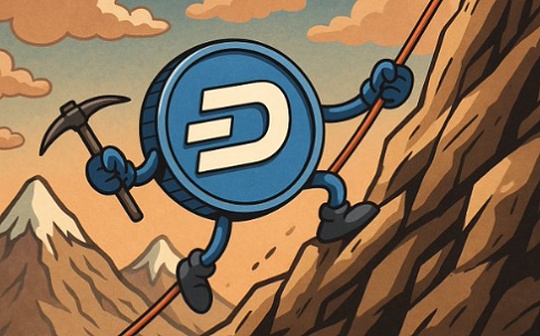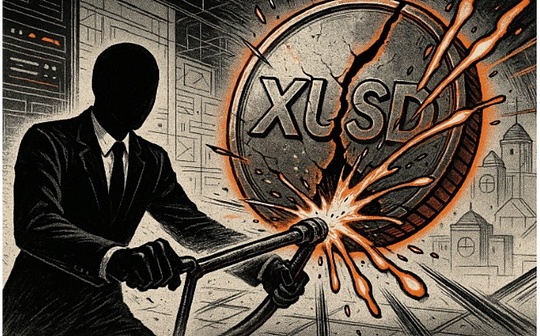
Author: Jeff Lewis, hedge fund product manager at Pantera Capital; Erik Lowe, content director at Pantera Capital; Compilation: 0xjs@Bitchain Vision
The growing trend of de-dollarization, that countries and institutions no longer rely on the US dollar in global trade and financial transactions, has raised concerns about the long-term dominance of the US dollar.
The most common indicator of dollar dominance—the proportion of dollar in foreign exchange reserves—has been on a long-term downward trend, down 13 percentage points since 2000.
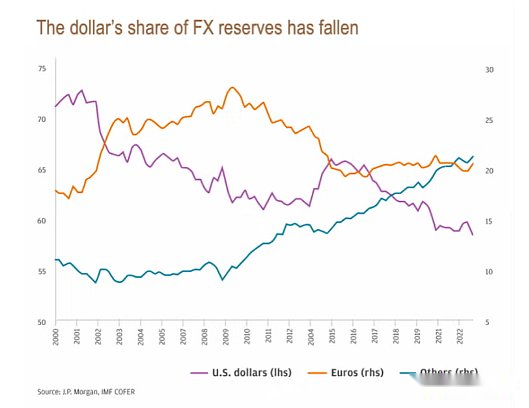 We believe that this trend is about to reverse, and ironically, the factors driving this trend are the accelerator of the dollar’s depreciation that most U.S. policymakers and central bank governors five years ago: blockchain technology and tokenization.Once seen as a potential destroyer of the dollar’s status, it is now becoming the biggest driver of the dollar’s status.
We believe that this trend is about to reverse, and ironically, the factors driving this trend are the accelerator of the dollar’s depreciation that most U.S. policymakers and central bank governors five years ago: blockchain technology and tokenization.Once seen as a potential destroyer of the dollar’s status, it is now becoming the biggest driver of the dollar’s status.
“The most ironic result is the most likely to happen.” – Elon Musk
Super Dollar
Public chains have enhanced the circulation of fiat currency, allowing 5 billion smartphone users around the world to easily use fiat currency and enable them to easily move across borders.The demand for tokenized fiat currencies (i.e. stablecoins) has created a huge industry worth $200 billion, with the US dollar dominating.Castle Island and Brevan Howard released a report that includes the chart below, showing that dollar collateral accounts for almost 100% of the stablecoins relative to other economic categories.
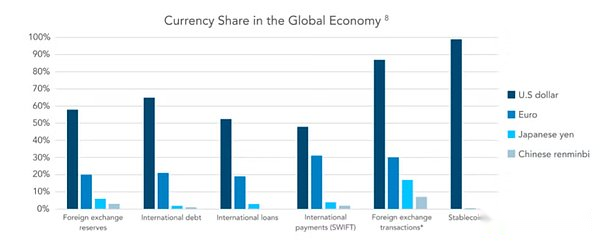
Source: Castle Island and Brevan Howard Report
Among the top 20 fiat-backed stablecoins, 16 names have “USD” in them.

Source: rwa.xyz
The general perception of blockchain has hardly changed in the 16 years since its birth.The initial advocates of Bitcoin did see the potential of cryptocurrencies to challenge the dollar’s dominance.In recent years, Bitcoin has been increasingly seen as a tool for storing wealth rather than a medium of exchange, thus minimizing its threat in this regard.The rise of the stablecoin/RWA phenomenon has enabled blockchain to deliver on Bitcoin’s initial promise to provide a means of trading that is stable and ultimately profitable.Instead of weakening the correlation of the dollar, it strengthens it.
Emerging Markets
In emerging markets, dollar-backed stablecoins are practical alternatives to holding physical cash or relying on fragile banking systems.If there is a choice, merchants and citizens of currency-instable countries will increasingly tend toward the stability of digital dollars.In Castle Island and Brevan Howard’s report, they published their findings of existing cryptocurrencies users in emerging markets.A key conclusion is that savings denominated in USD are a huge driver of emerging markets.
-
47% of respondents said their main purpose of using stablecoins is to save in the US dollar (this is slightly less than 50% of the percentage of using stablecoins mainly for trading cryptocurrencies or NFTs)
-
69% of respondents have converted their own currencies into stablecoins, which are not used for trading
-
72% of respondents expect to increase their use of stablecoins in the future
Note: The countries surveyed include Nigeria, Indonesia, Türkiye, Brazil and India
Whether users are small consumers or multinational corporations, the US dollar may squeeze other local currencies as economic entities tend to choose the safest and most liquid currency.
In the best interests of the United States – stablecoin legislation in 2025?
The legislative momentum is growing, and the Trump administration is expected to pass regulations focused on stablecoins.Patrick McHenry’s stablecoin bill has bipartisan support, which was originally proposed in 2023 and was recently submitted to the House by Rep. Maxine Waters.Stablecoin legislation has long been seen as the first step in achieving US regulatory clarity.We believe we will see meaningful progress in 2025, especially as policy makers increasingly recognize the strategic role of stablecoins in expanding the dollar’s influence.
Stablecoins are in the best interest of the United States as they will increase the proportion of transactions denominated in US dollars and create demand for U.S. Treasury collateral.
A country with $37 trillion of outstanding debts needs to distribute fiat currency, and cryptocurrencies can provide such distribution.
Stablecoins Vs. CBDC
For clarity, legally supported stablecoins and central bank digital currency (CBDC) are two similar but fundamentally different technologies that cannot be confused.
JPMorgan Chase released a report on the growing trend of de-dollarization in October.One of the potential drivers they highlight is promoting payment autonomy through new technologies.They mentioned projects such as mBridge, a multi-central bank digital currency program, which they believed was a potential alternative to US dollar trading.
Although emerging payment systems such as foreign CBDC have further exacerbated pressure on de-dollarization, we believe that the booming USD-backed stablecoin market is contrary to this claim.We believe thatStablecoins built on decentralized, license-free blockchains will be preferred because they provide better privacy, censorship resistance and cross-platform interoperability.
Meet the demand for US Treasury bonds through tokenized products
According to the U.S. Treasury Department, $120 billion of stablecoin collateral is directly invested in U.S. Treasury bonds, which has led to an increase in demand for short-term securities.In addition to stablecoins, direct tokenization of US Treasury bonds is also a growing trend.BlackRock’s Securities, Franklin Templeton, Hashnote and Pantera portfolio company Ondo all run the $4 billion market.
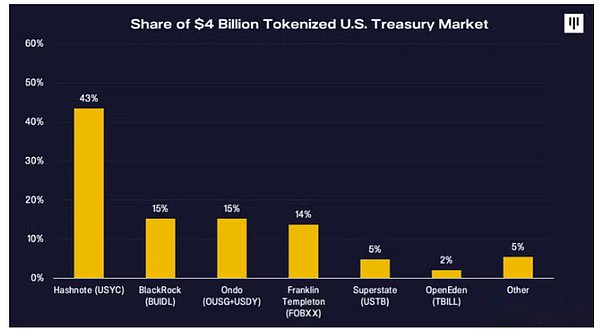
Ondo offers two core products in this area:
-
USDY (USD Earnings Token): Tokenized notes collateralized with short-term US Treasury bonds and bank deposits, providing stable and high-quality returns to non-US investors.
-
OUSG (Ondo Short-term U.S. Government Treasury): Provides liquidity exposure to short-term U.S. Treasury bonds, allowing eligible buyers to mint and redeem immediately.
Products such as USDY provide easier access to USD and Treasury bonds for people living overseas than traditional channels.
A new era dominated by the US dollar
Instead of weakening the hegemony of the US dollar, blockchain technology has created a digital infrastructure to consolidate the hegemony of the US dollar.The ability to tokenize and mobilize dollar assets globally makes the dollar still indispensable, even as geopolitical and technological forces drive pressure on de-dollarization.As JPMorgan noted in its report, the structural factors that support the dominance of the dollar—deep capital markets, rule of law and institutional transparency—are still unparalleled.Stablecoins extend these advantages to a digital, borderless environment.
The US dollar was once regarded as a weaker side in the face of blockchain innovation, but now it has become its biggest beneficiary.The “killer application” of blockchain is likely to be the US dollar itself, demonstrates how technology can strengthen traditional power structures while reinforcing them.With the emergence of supportive regulatory frameworks and the growing demand for tokenized assets, the on-chain migration of the US dollar may consolidate its position as a cornerstone of global finance.Whether the U.S. regulators or lawmakers are Democrats or Republicans, they will agree that any force that supports demand for U.S. Treasury bonds is a force that should be exploited rather than boycotts, making meaningful regulatory progress almost a fait accompli.

